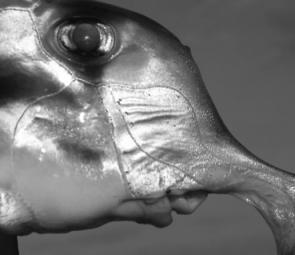With the chocolate bearing bunny ready to pay us a visit, Western Port anglers are setting their sights on the annual run of elephant fish.
These strange looking creatures migrate from deep waters somewhere off the New Zealand coast to the shallows of Western Port where they spawn. They enter the port by the thousands, usually during late February and early March, and then leave in May. For many anglers, this presents an easy opportunity to catch a feed.
Elephant fish aren’t fussy eaters, but then after swimming several hundred kilometres, neither would I be. They love pilchards and squid, but will eat nearly anything you throw at them. Keep baits reasonably small because our target species has a fairly small mouth. Half pillies are better than whole ones and a squid strip sweetened with a pilchard cube works extremely well.
Elephant fish are suckers for a solid berley trail. A pot full of crushed pillies, pellets and tuna oil will draw them in from miles away. Keep the pot close to the bottom where they prefer to travel.
Because they move in large schools, it is possible to catch over 50 elephant fish in a single session. This can be cause for concern because it makes them vulnerable to illegal take, sometimes for sale.
Often you will see dozens of discarded carcasses at the boat ramp. Worst of all, they’re taken amidst their breeding cycle. If we wipe them out before they’ve had a chance to spawn then future stocks might dwindle.
Keep one or two for dinner (the daily bag limit is 3 and there is no minimum legal length) and let the rest go. Don’t forget to clean and bleed your catch quickly or it will be inedible due to the ammonia taste associated with most shark and stingray species. (check out Andrew Clark’s feature article on cleaning elephant fish on pages 54 and 55 – Ed.)
The standard Western Port running sinker rig is perfect for elephant fish. Use smaller hooks than you would for gummies or snapper. A 2/0 or 3/0 is fine.
They have a large spine on the top of their dorsal fin to be wary of. It’s remarkably sharp with a serrated edge that will make a real mess of clumsy fingers. For this reason, use a 40lb leader so you don’t need to get too close.
They also have a nasty habit of rolling up the trace once hooked. A light leader often breaks under the strain of a twisting, turning elephant fish.
The only problem with the elephant fish season is that it can be almost impossible to keep a bait in the water long enough for a gummy or a snapper to find it. When the elephants are on the chew, the car park is the only place they won’t take over. Sometimes, the key is to find something they don’t like eating. Cured eel anyone?
Reads: 4202
Clearly designed to feed along the bottom, elephant fish have small mouths and are best targeted with little baits of pilchards or squid (image courtesy Jarrod Day).




